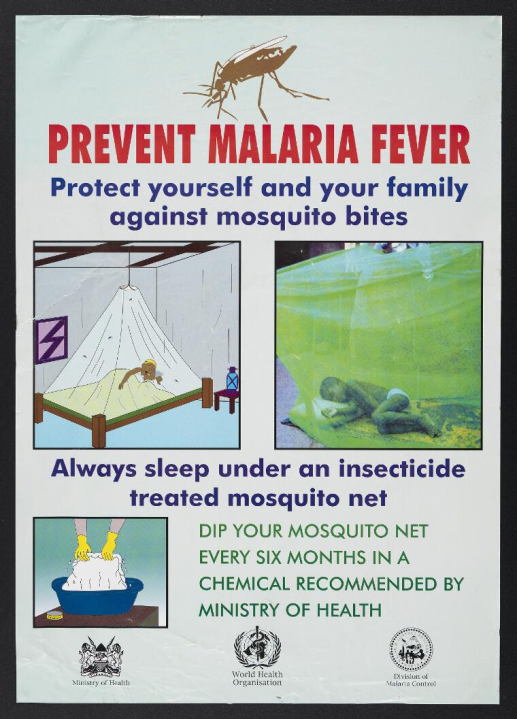WP1 examines how large-scale, mid-20th century disease control programmes against vector-borne diseases that had seen epidemic outbreaks triggered by colonial changes, persist in East African landscapes. It studies how aspects of these interventions (against malaria, tsetse fly, or onchocerciasis) endure, shaping contemporary life, health and disease, and public health work. Disease control was usually organised through time-limited ‘campaigns’ aiming at disease ‘eradication’, which was rarely achieved. Campaigns against insect vectors involved vegetation clearing, resettlement and above all extensive application of insecticides. This altered landscapes, ecologies and terrain, and human and non-human lives.
In the second half of the 20th century, insecticides were sprayed over large areas of East Africa, poured into watercourses, applied to animals, house walls and bed-nets, stored and spilled. These interventions to control insect-borne diseases altered settlement structure and vegetation, and left behind professionals, infrastructures and apparatus, and memories that shape attitudes to disease control. They also left invisible residuals: persistent organic insecticides sedimented in the ground and accumulated in humans, animals and plants, and are currently suspected by many of contributing to an emerging cancer epidemic.

Aim:
To trace afterlives of insecticide-based disease control in East Africa, taking durable insecticidal infrastructures, chemical residuals, archives and memories as starting points to open up contemporary concerns with well-being, toxicity and evidence.
Questions:
What remains of insecticide-based disease control measures in the present? How do these remains shape present social life and relations, and how do people engage with them? How does present pesticide promotion and use relate to historical interventions? What concerns do the presence and use of these chemicals raise and what forms of life do they engender and/or threaten?
Approach:
While we conduct archival work and collaborate with scientists, our main approach is ethnographic, starting from observations in the present, in areas of intense insecticide-based disease control, in the institutions involved, and among people – professionals and local residents – whose lives were and are affected. We attend to how people in former intervention and trial sites, including medical and technical professionals, live with the layered remains of disease control, remember and forget them, and deploy them in their everyday and professional lives, and how material legacies and remains continuously affect and transform landscapes and lives. Studying institutions involved in disease control and pesticide regulation, we follow how various actors imagine and employ toxicity, the relations between toxicity and efficacy, as well as the kinds of futures that are imagined through public health and agricultural pesticides. Through the research, we aim to create a space for collaboration with scientists and affected communities, and to contribute to debates in East Africa and beyond, about toxicity and health, the challenge of traceability, the limits of toxicological knowledge, and options for remedial action.
DDT versus malaria : a successful experiment in malaria control by the Kenya Medical Department. Wellcome Collection. In copyright
